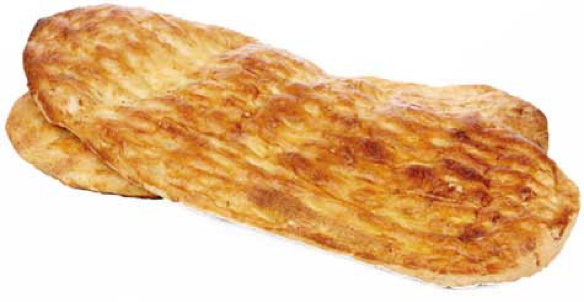Governments in a panic to solve budget deficits, turn to fiscal solutions, such as hiking the price of consumer goods. Such fiscal policy, maybe a quick fix but escalates the suffering of citizens, that are threatened by such prices. Although Iranians had expectations of hope and change from the Rouhani government in particular post conclusion of the Joint Comprehensive Plan of Action (JCPOA)and American relief, it all went to no avail, as citizens witnessed no change in the economic standards. This resulted in hope and expectation being lost in Rouhani’s 11th and 12th government. The following is a report on the rising prices of bread since the beginning of the 9th government:
Bread prices hiked 8-times during Ahmadinejad’s eight years of rule

During the period of the 9th and the 10th governments (Ahmadinejad’s first and second presidential terms) bread prices grew by 800 percent in Iran. Data shows that there was a leap in bread prices from 2005 to 2009, which was during the 9th government of Ahmadinejad presidential term. Accordingly, “Alsnjk” bread price jumped from 75 to 250 Tomans, “Berber” from 50 to 200 Tomans, and “Lafash” from 5 to 30 Tomans.
During the 10th government period, following the implementation of the Law on Targeted Subsidies in 2010, the price of bread increased again; “Alsnjk” bread sold for 400 Tomans, “Berber” for 300 Tomans, and “Lafash” for 100 Tomans.
In 2013, when the 11th government took over, the price of “Berber” bread was 300 Tomans, “Alsnjk” 350 Tomans, and “Lafash” 130 Tomans.
This indicates that the price of bread hiked eight times since the beginning of the 9th government until the end of the 10th government.
During the 11th government since December 2014

Price of bread increased by 30% starting from 1 December 2014. Although this increase did not affect the rich, it had a consequence on the poor and the working classes. Moreover, it hit hard into the budgets and accounts of families. At that time, the government spokesperson had said that because bread prices had not risen for several years, the bakeries could raise the value of bread by 30 percent. Accordingly, the price of “Lafash” bread rose from 160 to 208 Tomans, while “Alsnjk” increased from 600 to 780 Tomans. Indeed, a 30 percent rise in prices overnight in a vital good such as bread is counter to the wishes and expectations of the people, also it flouts the “change and hope” that people voted for.
The Iranian central bank had announced in that period that the rate of inflation had reached about 20%, then the question that arises is; why was it necessary to hike bread prices by 30 percent? Would the salaries of employees be raised above the rate of inflation to offset the economic hardship?
New prices for bread were announced

On 22 November 2017, bread prices in government bakeries were announced in Tehran. On that basis, the price of “Berber” bread had risen from 650 to 750 Tomans, “Tavtons” from 400 to 460 Tomans, while “Alsnjk” increased from 800 to 920 Tomans, and the price of “Lafash” and “Ring-shaped Tavtons” rose from 210 to 240 Tomans.
A short while ago, the Market Regulatory Authority announced a 15% increase in the price of bread, which was set to be implemented starting from 22 November 2017 throughout Iran, without changing the actual weight of the baked goods.
